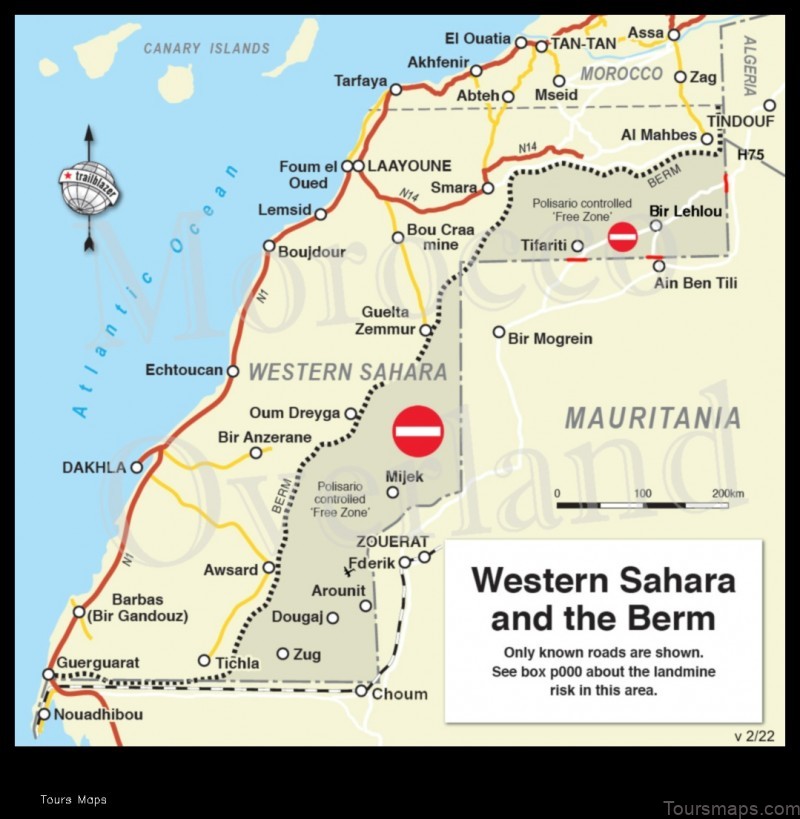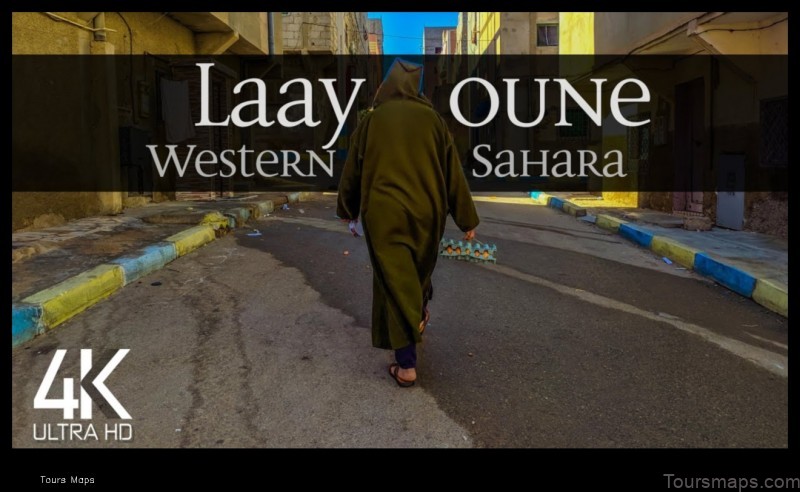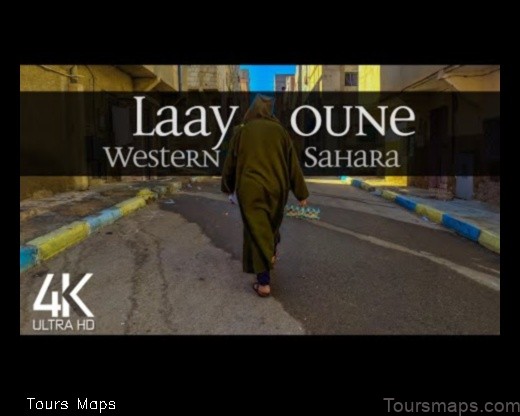
I. Introduction
II. History of Western Sahara
III. Geography of Western Sahara
IV. Climate of Western Sahara
V. Demographics of Western Sahara
VI. Economy of Western Sahara
VII. Culture of Western Sahara
VIII. Government of Western Sahara
IX. Foreign relations of Western Sahara
X. FAQ
| Feature | Description |
|---|---|
| Western Sahara map | A map of Western Sahara, showing the disputed territory’s location in North Africa. |
| Sahrawi Arab Democratic Republic | The Sahrawi Arab Democratic Republic (SADR) is a state that claims sovereignty over Western Sahara. |
| Disputed territory | Western Sahara is a disputed territory between Morocco and the Sahrawi Arab Democratic Republic. |
| Morocco | Morocco controls most of Western Sahara, but the Sahrawi Arab Democratic Republic claims sovereignty over the entire territory. |
| Algeria | Algeria supports the Sahrawi Arab Democratic Republic and has provided military assistance to the Polisario Front. |
| Polisario Front | The Polisario Front is a political and military organization that represents the Sahrawi people and advocates for the independence of Western Sahara. |

II. History of Western Sahara
The history of Western Sahara is a complex one, dating back thousands of years. The region was first inhabited by nomadic Berber tribes, who lived in the area for centuries. In the 11th century, the Almoravid dynasty conquered the region, and in the 16th century, the Saadian dynasty took control. In the 19th century, the region was claimed by Spain, and in 1975, Morocco and Mauritania invaded the region. A war between Morocco and the Polisario Front, a Sahrawi independence movement, ensued. In 1991, a ceasefire was declared, and the United Nations established a peacekeeping force in the region. The status of Western Sahara remains unresolved, and the region is currently divided between Morocco and the Polisario Front.
III. Geography of Western Sahara
Western Sahara is located in the northwest corner of Africa. It is bordered by Morocco to the north, Mauritania to the east, and Algeria to the southeast. The coastline of Western Sahara is on the Atlantic Ocean.
The total area of Western Sahara is about 266,000 square kilometers (102,000 square miles). The majority of the land is desert, with some mountains in the north and east. The climate is hot and dry, with average temperatures ranging from 25°C to 35°C (77°F to 95°F).
The population of Western Sahara is estimated to be about 600,000 people. The majority of the people are Sahrawis, who are a Berber people. There are also a small number of Moroccans and other Africans living in Western Sahara.
The official languages of Western Sahara are Arabic and Spanish. However, many people in Western Sahara also speak Hassaniya, a dialect of Arabic.
The economy of Western Sahara is based on fishing, agriculture, and mining. The main exports of Western Sahara are fish, phosphates, and dates.
Western Sahara is a disputed territory. Morocco claims sovereignty over Western Sahara, but the Sahrawi Arab Democratic Republic (SADR) claims independence. The SADR is recognized by 84 countries, but Morocco does not recognize it.
The United Nations has been trying to mediate a solution to the conflict in Western Sahara for decades. However, no agreement has been reached.

IV. Climate of Western Sahara
The climate of Western Sahara is hot and dry, with long, hot summers and short, cool winters. The average annual temperature is around 27°C (81°F), and the average annual rainfall is around 100 mm (4 inches). The climate is influenced by the trade winds, which bring hot, dry air from the Sahara Desert. The climate is also affected by the Atlantic Ocean, which moderates the temperature and provides some rainfall.
The climate of Western Sahara can be divided into two main regions: the coastal region and the interior region. The coastal region is cooler and more humid than the interior region, due to the influence of the Atlantic Ocean. The interior region is hotter and drier than the coastal region, due to the lack of moisture from the ocean.
The climate of Western Sahara can be a challenge for human habitation. The heat and dryness can make it difficult to grow crops and raise livestock. However, some people have adapted to the climate and live in oases or along the coast.
5. Demographics of Western Sahara
The population of Western Sahara is estimated to be around 600,000 people. The majority of the population is Sahrawi Arab, with smaller minorities of Berbers, Moors, and Europeans. The official language of Western Sahara is Arabic, but Spanish is also widely spoken. The majority of the population is Muslim.
The economy of Western Sahara is based primarily on agriculture and fishing. The main crops grown in Western Sahara include dates, olives, and wheat. The main fish caught in Western Sahara include tuna, sardines, and mackerel.
The government of Western Sahara is a de facto independent state, but it is not recognized by any country other than Algeria. The Polisario Front is the main political party in Western Sahara.
The foreign relations of Western Sahara are complicated by the fact that it is a disputed territory. Western Sahara has diplomatic relations with Algeria, Cuba, Egypt, Mauritania, Russia, and South Africa. It does not have diplomatic relations with Morocco or any other country that recognizes Moroccan sovereignty over Western Sahara.
VI. Economy of Western Sahara
The economy of Western Sahara is based on the extraction of natural resources, such as phosphates and fisheries. The phosphate industry is the largest in the country, and it accounts for a significant portion of the government’s revenue. The fishing industry is also important, and it provides jobs for many people in the country. However, the economy of Western Sahara is heavily dependent on imports, and the country has a trade deficit.
The following are some of the key economic indicators for Western Sahara:
- GDP (nominal): $4.3 billion (2019)
- GDP (per capita): $2,500 (2019)
- Population: 570,000 (2019)
- Unemployment rate: 25% (2019)
- Inflation rate: 3.5% (2019)
The economy of Western Sahara is expected to grow in the coming years, as the government continues to invest in infrastructure and the mining industry. However, the country faces a number of challenges, including a lack of access to international markets and a high unemployment rate.
VII. Culture of Western Sahara
The culture of Western Sahara is a blend of Arab, Berber, and African traditions. The main language spoken in Western Sahara is Hassaniya Arabic, which is a dialect of Arabic spoken in Mauritania and Morocco. The majority of the population is Muslim, and the main religion is Islam. The traditional dress of Western Sahara is the djellaba, which is a long, hooded garment that is worn by both men and women. The traditional music of Western Sahara is a blend of Arabic, Berber, and African influences. The main musical instruments used in Western Sahara are the oud, the gimbri, and the tambour. The traditional dance of Western Sahara is the ahouach, which is a group dance that is performed at weddings and other celebrations.
VIII. Government of Western Sahara
The government of Western Sahara is a disputed territory. The Sahrawi Arab Democratic Republic (SADR) claims to be the legitimate government of Western Sahara, but it is not recognized by any country except Algeria. Morocco controls most of Western Sahara and claims it as part of its territory. The Polisario Front is a rebel group that fights for the independence of Western Sahara.
The SADR is a parliamentary republic. The president is the head of state and the prime minister is the head of government. The parliament is elected by the people of Western Sahara.
Morocco is a constitutional monarchy. The king is the head of state and the government is headed by the prime minister. The parliament is elected by the people of Morocco.
The Polisario Front is a guerrilla movement that fights for the independence of Western Sahara. It is not a recognized government, but it controls a large part of Western Sahara.
The future of Western Sahara is uncertain. The UN is trying to mediate a solution to the conflict, but there is no agreement in sight.
Western Sahara has no official diplomatic relations with any country. However, it does maintain informal relations with a number of countries, including Algeria, Brazil, Cuba, Egypt, India, Iran, Lebanon, Mali, Mauritania, Morocco, Nigeria, Qatar, Russia, South Africa, Sudan, Syria, Tunisia, Turkey, and the United Arab Emirates.
Western Sahara is a member of the African Union (AU) and the Organization of Islamic Cooperation (OIC). It is also a signatory to the Treaty of the African Economic Community (AEC).
Western Sahara’s main foreign policy objectives are to gain international recognition as a sovereign state and to end the Moroccan occupation of its territory.
Western Sahara has been involved in a number of conflicts with Morocco over the years. The most recent conflict, the Western Sahara War, lasted from 1975 to 1991. The war ended with a ceasefire agreement, but the conflict has not been resolved.
Western Sahara is a disputed territory. Morocco claims sovereignty over the territory, while the Polisario Front, a Sahrawi independence movement, claims that Western Sahara is an independent state called the Sahrawi Arab Democratic Republic (SADR).
The United Nations has called for a referendum on the future of Western Sahara, but the referendum has not yet been held.
X. FAQ
Question 1: What is the capital of Western Sahara?
Answer: The capital of Western Sahara is El Aaiún.
Question 2: What is the population of Western Sahara?
Answer: The population of Western Sahara is estimated to be around 600,000 people.
Question 3: What is the official language of Western Sahara?
Answer: The official language of Western Sahara is Arabic.
Table of Contents
Maybe You Like Them Too
- Explore Doncaster, United Kingdom with this detailed map
- Explore Arroyito, Argentina with this Detailed Map
- Explore Belin, Romania with this detailed map
- Explore Almudévar, Spain with this detailed map
- Explore Aguarón, Spain with this detailed map
